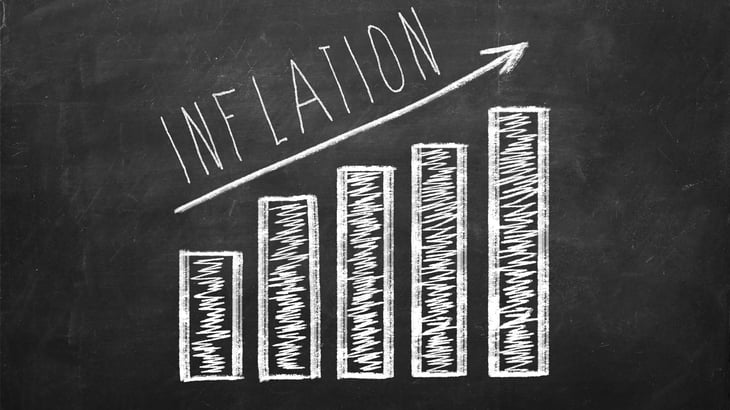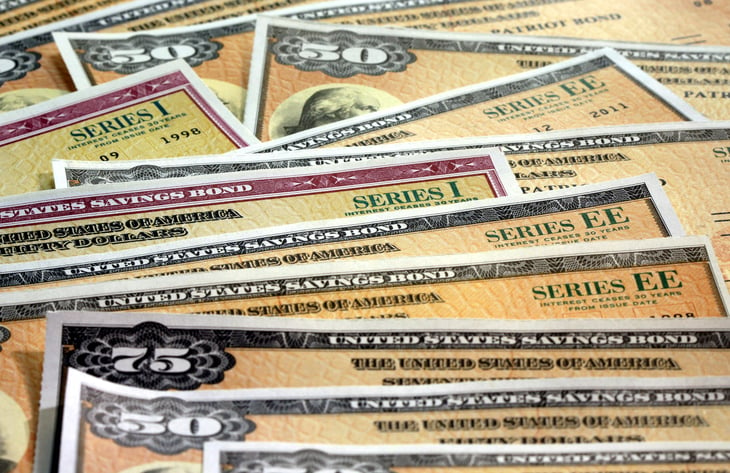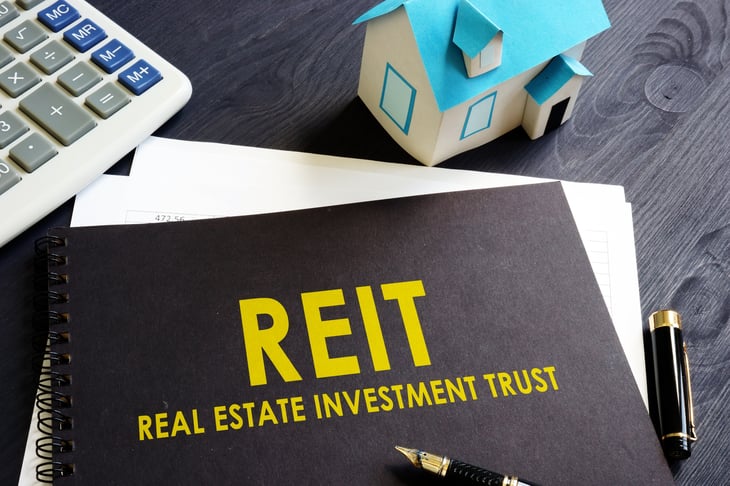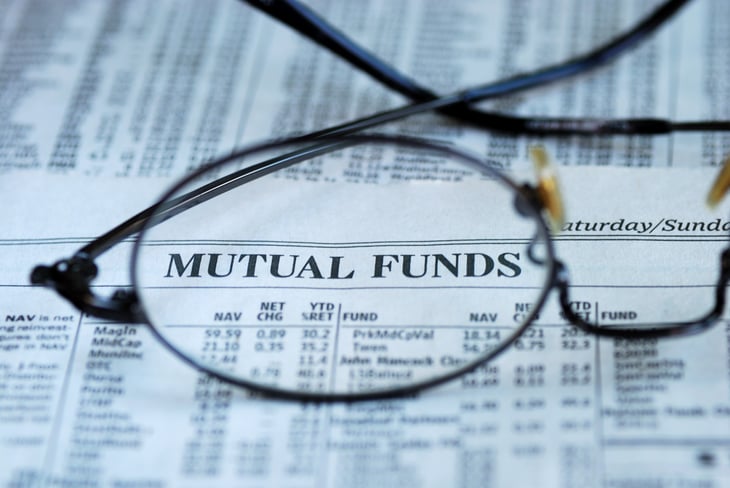
This story originally appeared on NewRetirement.
When you are retired or near retirement, it is generally a good idea to have a percentage of your savings in investment vehicles that are lower in risk. However, it can be difficult to find low-risk, high-return investments — especially now with certificate of deposit (CD) and savings account rates at less than 1 percent.
Not too long ago, retirees could earn sufficient interest in low-risk savings vehicles that could keep money protected while allowing adequate growth. But today’s extremely low rates make that nearly impossible. And rates are not expected to rise any time soon. In fact, the Federal Reserve has promised to keep rates low through 2023 to support economic recovery.
At any rate, there is more to consider than just returns.
There Is More Than Just Low Risk and High Return to Consider

The rate of return or interest rate is what most people are concerned about when considering a low-risk, high-return investment. However, there are other factors that may make different investment options more or less attractive. Before we talk about specific investment options, let’s look at six things to consider in addition to the rate of return.
Liquidity and Your Time Horizon

How soon do you need access to the money? Do you need the money to be liquid — available at any time?
Fees

With any investment, it is critically important to factor in the fees. Fees can eat up your returns and are often hidden.
Minimum Investment/Balance

Some investment vehicles have a minimum amount you need to invest. Certain account types also may come with a maximum investment.
The Inflation Rate

If your return on your money is not greater than the rate of inflation, then you are not actually earning real returns. Inflation is a sneaky factor to consider with regard to your rate of return. You should always think in terms of your “real” rate of return, which is your return minus the inflation rate.
Is Investment Designed for Income or Growth, and Is That What You Need?

Sometimes you will want to make a low-risk, high-return investment that is designed to pay you an income. Other times, you simply want your money to appreciate for withdrawal at a later date.
Your Overall Asset Allocation and Specific Needs

Many people around retirement age are fearful of keeping too much money in the stock market. But, the stock market is one of the best ways to grow your money for the long term and should be included in your portfolio — though preferably in the form of funds.
There are various rules of thumb for determining your best asset allocation between high-risk, high-return and low-risk, low-return investments and everything in between.
However, the most personalized way to determine your optimal asset allocation is to create detailed spending projections to determine how much money you will need and when and for what kinds of expenses. You will want the money that you absolutely need to spend in the near term in low-risk vehicles (with the highest returns possible) and money that you will want in the future can be invested with higher risk, potentially capturing higher returns. The NewRetirement Planner is designed to help you figure this out.
14 Low-Risk and High-Return Investments

So, where should you keep money that you want to protect from risk while earning adequate returns? I have got some bad news: There is really no such thing. You can’t have your cake and eat it too.
However, keep reading for some options for lower-ish risk, higher-ish return investment options.
1. Keep Money in the Bank

According to the FDIC, the national average interest rate on savings accounts currently stands at 0.05% annual percentage yield (APY) (compare that to the average stock market return over the last 100 years of 10%). The 0.05% APY applies to both average and jumbo deposits (balances over $100,000).
That being said, there is a lot of competition in the marketplace for cash savings, and you can find higher rates. But, this is overall not a low-risk, high-return investment. Consider it more of a low-risk and low-return opportunity.
How low? Well, if you had $50,000 in an account earning a 0.05% APY, then you would only earn $125.13 over a five-year period.
2. In High-Yield Savings Accounts (HYSAs)

A high-yield savings account (HYSA) is a type of savings account that pays significantly higher interest — 20 to 25 times the national average. Many of the best rates on HYSAs can be found from online banks.
If you were to earn a “good” rate of return on an HYSA, then you might earn 0.50% APY. This is significantly more than the 0.05% APY you might earn from a traditional bank. So, your $50,000 would earn $1,265.49 in five years ($1,000 more than in a traditional bank).
3. In Money Market Accounts

A money market account is a savings account that can also function as a checking account and typically comes with a debit card with unlimited transactions.
Money market accounts typically offer higher returns than what a bank offers on a typical checking account. A pro and a con is that the money is very available for withdrawal — good if you want the asset to be liquid, bad if you are trying to save the money. It may be too tempting not to touch it.
A typical APY on a money market account is 0.30% to 0.50%.
4. In Cash Management Accounts

A cash management account is another variation of other savings accounts and is typically offered by brokerage firms and robo-advisers.
Current APYs on cash management accounts are around 0.50%.
5. With a Credit Union

According to MyCreditUnion.gov, “Credit unions are not-for-profit organizations that exist to serve their members. Like banks, credit unions accept deposits, make loans and provide a wide array of other financial services. But as member-owned and cooperative institutions, credit unions provide a safe place to save and borrow at reasonable rates.”
Credit unions typically provide higher interest rates on cash accounts than banks. You will also typically pay lower fees for ATMs and other services.
However, always read the fine print. Many of the offers from bank/credit unions that have attractive rates either cap the balance that is available for the rate and/or require you to create a checking account and actually use their product for a certain number of transactions per month. And the caps can be really low ($3,000–$5,000).
6. In a Certificate of Deposit (CD)

A certificate of deposit (CD) is a financial product that restricts your access to your money for a specified period of time. For that restriction, you are rewarded with a better return than with traditional savings accounts.
Current rates are around 1.05% APY for a five-year term, and there is typically a minimum investment required.
7. Move Money Around Based on Incentives and Perks

You probably have a friend who changes credit card accounts frequently to take advantage of all the perks that are offered with various cards. This is often referred to as “churning.”
Well, if you’re willing to move your money around and keep track of all requirements, cash bonuses for opening, interest rates and duration, you can do something similar with cash accounts. For example, Capital One had an offer recently where you could receive $400 for opening a new checking account and have two automated deposits of at least $1,000 in 60 days.
Please note that NewRetirement has no affiliation with Capital One and the above example may no longer be available.
If you do a few of these a year, it is worth more than any high-yield savings account returns, but with many hoops to jump through.
8. In U.S. Savings Bonds

A bond represents a loan an investor makes. When you invest in a bond, you are guaranteed a specified return and your principle will be paid back on a predetermined date. Your returns are paid as interest and are not based on profits.
The vast majority of bonds that are bought and sold are done so through the secondary market, meaning between an investor to another investor, and not from the original borrower to an investor.
Government bonds typically offer slightly better interest rates than a savings account, without a lot of additional risk. U.S. Treasury bonds are backed by the federal government, meaning that you are most certainly assured you will get your money back. If you don’t, then the dollar probably doesn’t exist at that point, and we have much bigger problems to deal with.
Your returns are determined by how long you hold the bond. Current returns are around 0.03% for a one-month duration and 2% for a duration of 30 years, but these numbers can vary significantly.
As a comparison, since 1926, large stocks have returned an average of 10% per year while long-term government bonds have returned between 5% and 6%, according to investment researcher Morningstar.
The face value of a bond also changes as interest rates change. As interest rates go up, your bond would be worth less on the secondary market, as you have a lower interest rate than is otherwise available. If interest rates go lower (and in our case, negative, such as in Germany), your bond would be worth more.
Some state-government bonds also are tax-sheltered in the state that they are issued in, which might make them interesting to those of us in high income-tax brackets.
9. In Corporate Bonds

A corporate bond is a bond issued by a company rather than a federal, state or local government. They are considered to be a relatively safe investment, though far riskier than government-backed bonds.
Corporate bonds are reviewed for creditworthiness by rating agencies like Standard & Poor’s and Moody’s. Bond ratings are used to inform you about the stability of the bond in question, and the ratings help determine the interest rates that are paid.
Bonds with lower ratings, such as junk bonds and below-investment-grade bonds may have higher returns, but carry with them a much higher risk of default. Some bonds can even be called, meaning the borrower can elect to pay off the bond early. This occurs when the borrower can borrow funds from a different source at a lower interest rate. Always read the fine print.
10. Invest in a Fund

An investment fund is a portfolio of assets — usually stocks and/or bonds. Instead of investing in or lending to one company, you are investing in a group of companies, which spreads your risk.
There are many types of funds. and some may be better than others as a low-risk, high-return investment. Let’s take a closer look at five options:
Index Funds

An index fund is a concept that was invented by John Bogle, founder of Vanguard, as part of his thesis at Princeton. If you think successful long-term investing is about picking just the right stocks, think again. Bogle’s genius was not in knowing which stock to buy, but rather in knowing that some stocks will gain and some will lose but the overall market will gain over the long term.
An index fund is an investment made in an entire market, not individual sectors or companies. As Bogle famously said, “Don’t look for the needle in the haystack. Just buy the haystack.”
Index funds are also cap-weighted. This means that companies are held in proportion to their valuation. Large companies, such as Apple, are heavily weighted, while smaller companies are less so.
Stable Value Funds

Stable value funds are a portfolio of bonds that are insured to protect the investor against a decline in yield or a loss of capital. They are a common low-risk investment option inside of many 401(k) plans (there is very limited availability outside of 401(k)s).
Stable value funds are a portfolio of bonds that are insured to provide the investor with a reasonable guarantee of return (though they are not insured by the FDIC) of principal. And, as the name says, they return a stable rate of interest.
The interest rate is typically a few percentage points above money market funds. However, beware of fees.
Target Date Funds

A target-date fund (also known as a life cycle fund or age-based fund, or even abbreviated as a TDF) is an investment fund that automatically changes your investment portfolio from high-risk, high-reward to low-risk, low-reward options as you near your target date — the date when you want the money to be available to you for withdrawal.
The target date is usually identified in the name of the fund. So, if you want access to the money in or near 2045, you would pick a fund with 2045 in its name.
There are various pros and cons associated with target-date funds. You will definitely want to assess the fees on the investment. And, know that your money can be at risk and that you can’t take it out before the target date.
What if you think a certain TDF is too conservative? Then use a TDF with a date further down the line than when you want the money. This way, you will have a higher percentage of stocks for longer.
How about if a TDF is too aggressive for your taste? Do the opposite: choose a TDF with a date nearer than when you expect to use the money.
Real Estate Investment Trusts (REITs)

A real estate investment trust (REIT) is a fund of properties — typically income-producing assets like apartment buildings and hotels.
Tax-Exempt Mutual Funds

A tax-exempt mutual fund is a fund composed of investments that generate tax-free interest. These funds are offered by some investment firms.
To benefit from a tax-exempt mutual fund, you will need to invest outside of any tax-advantaged account and be in a higher tax bracket.
11. Look at Ladders

Investopedia defines laddering as “Buying multiple financial products of the same type — such as bonds or CDs — each with different maturity dates. By spreading their investment across several maturities, investors hope to reduce their interest rate and reinvestment risk.”
Learn more about bond ladders.
12. Consider Annuities

An annuity is an insurance product that guarantees income. They are popular with retirees who want to be assured that they will get a certain amount of income over a specified period of time.
In fact, according to a Towers Watson Retirement Survey, having predictable retirement income (presumably adequate income to cover all of your expenses) can help you feel happier. Conversely, the researchers discovered that retirees who must withdraw money from investments to pay for retirement expenses had the highest financial anxiety.
There are a lot of variations to consider when purchasing an annuity, but the following are a few popular options for retirees looking for income.
Fixed-Term Annuities

When you buy an annuity, you are exchanging a lump sum of money for an agreed-upon income stream to be paid over an agreed-up term.
The income stream can be variable — the amount you get varies each month along with interest rates or investment returns. Or, the income stream can be fixed — the amount you get remains the same no matter what is going on with the financial markets.
Fixed annuities are appealing to retirees because they transform your savings into predictable income.
You also specify the term of an annuity, payments can last for a specified number of years, or your lifetime — no matter how long that turns out to be.
Guaranteed Lifetime Annuities

A guaranteed lifetime annuity is a specific type of fixed-term annuity and is ideal for retirement. When you purchase this type of annuity, you are getting a guaranteed paycheck for as long as you live — no matter how long that turns out to be.
Multi-Year Guaranteed Annuities (MYGA)

A multi-year guaranteed annuity (MYGA). It is similar to an n-year Certificate of Deposit except that it is issued by an insurance company, instead of by the FDIC. It has a fixed interest rate (such as 3%) and you would have to hold it for “n” years (where “n” equals five years, for example). After five years, you get your investment plus the interest over that period of time. You can surrender it sooner but then there is an early withdrawal penalty.
They are not FDIC insured but do have some protection from your state’s insurance guaranty program (if the company should fail). Today, a five-year MYGA is going for about 3%. These products often have a minimum to invest (such as $10,000) and can be “surrendered” after that time period with that full rate of return.
13. Be Wary, but Just Go With Stocks (Lower-Risk Stocks, Anyway)

Low-interest rates can force investors into riskier securities. While there are absolutely zero guarantees with stocks and you could potentially lose all of your money with even the most conservative stock investment, there are stocks that are less risky than others.
If you think you can tolerate a stock investment for a low-risk (well … at best it is probably a medium risk) high-return investment, consider the following two possibilities:
Preferred Stock

There are two types of stock — common and preferred. Preferred stock trades like common stock, but act somewhat like bonds. Preferred shareholders have a higher claim on dividends than common stockholders, and, in the event of liquidation, have a preferred claim on assets over common stockholders — but less than bondholders.
Dividend-Paying Common Stock

In general, companies paying dividends tend to be higher quality with stronger balance sheets and less risk. And, even though they have less volatility, they outperform non-dividend-paying stock over time as well.
They can return an average yield of 3% plus capital appreciation.
14. Paying Off Your Mortgage

Paying off your mortgage and eliminating all debt can be a pretty good low-risk, high-return investment.
For example, if you have a mortgage at 3%, you could effectively earn 3% interest on the value of the mortgage balance because it is no longer subject to interest.
Plus, it will improve your cash flow.
When it comes to getting advice from Certified Financial Planners (CFPs), it’s usually not in their best interests to recommend you pay down your mortgage. Why?
Most CFPs are paid on a percentage of assets managed (AUM). The more assets they manage, the more they take home. Diverting funds from your portfolio to pay down your mortgage inherently means that your CFP will earn less money. This is why looking for an adviser paid on an hourly basis keeps you and your adviser aligned.








Add a Comment
Our Policy: We welcome relevant and respectful comments in order to foster healthy and informative discussions. All other comments may be removed. Comments with links are automatically held for moderation.